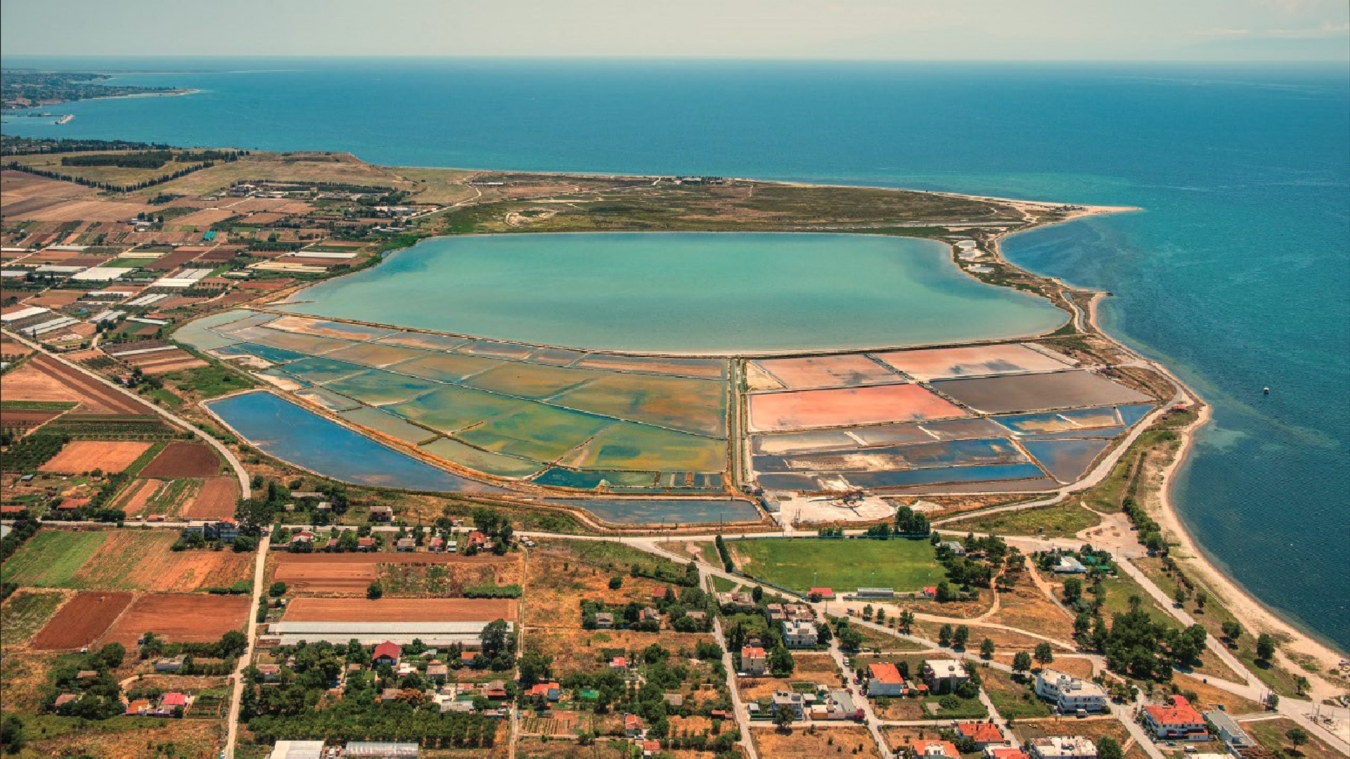Lagoon of Angelochori: An undiscovered destination with a unique wetland

Looking for an easy day trip, just outside Thessaloniki? Look no further than Angelochori Lagoon!
This unique wetland of Northern Greece belongs to the officially protected sites of the Natura 2000 network, having the peculiarity of combining different habitat types. It offers the possibility of an easy day trip just outside Thessaloniki.
At a distance of 30 km from Thessaloniki, Angelochori is a seaside village with a history dating back to the years of Turkish occupation. Up until 1927 it was known by its Turkish name of Sofoular. Because of its salt ponds, connected to the lagoon, it was a centre of salt production as early as 1902, which until the 1970s was exported with axes and shovels and then transported by horseback.
The lagoon and its wetland
The lagoon is located 1 km southwest of the village. It is joined by salt marshes and separated from the sea (Thermaikos Gulf) by a narrow, sandy strip of coastline. The depth is very shallow and there is a rich flora around it, with reeds, sea lilies, rushes and asphodel.
Its importance is due to its function as a migration station and as a feeding ground for a large number of water and wading birds. Thanks to their populations, the Angelochori lagoon offers unique images. The flamingo populations, for example, provide an impressive sight, especially in winter, when the largest concentrations of flamingos are usually recorded. However, it is also worth knowing about 178 or so species of birds that live in or pass through the area, so keep an eye out for the water swallow, steelhead, reed warbler, avocet and chickadee.
Apart from the birds, the lagoon hosts other species of life, of particular interest to the observant visitor. Despite its shallow depth, for example, at least 12 different fish live there, including rare species such as the Zacharias and the Tainiosakorafa. Note also that the seabed is covered with meadows of the protected species Poseidonia oceanica - a marine flamingo endemic to the Mediterranean - which is home to the striking bivalve molluscs known as pina, which are at a critical point of extinction. Fishing for them is therefore strictly prohibited.
On the shores of the lagoon, you can see rabbitfish (small ground squirrels), badgers and porcupines, as well as species protected by the European Union such as the green toad and the Asclepius's lamprey. Which may be intimidating being a 2m snake, it is nevertheless harmless, non-venomous and clearly impressive as one of the largest in all of Europe. Also keep an eye out for the rare bobcat, which is on Greece's Red Book of Endangered Animals and protected by international conventions.
Other attractions in Angelochori
Besides its impressive landscapes and unique flora and fauna, the lagoon is famous for its salt pans, as well as for its famous preserved lighthouse and the Austro-Ottoman castle.
The salt pans
They are located in the northern part of the lagoon and, although artificial, they are fully in harmony with the natural landscape that surrounds them. They also contribute to the protected ecosystem, both by supplying water to the surrounding area and by maintaining marine life in the lagoon itself.
The Keeper's House was built in the 1950s as a protection measure against those who stole salt from the salt marshes. Since 1992 (when it was abandoned) it has provided a special attraction from which one can look out over the entire wetland. Today the building belongs to the Municipality of Thermaikos and is under the auspices of the Cultural & Educational Association of Angelochori, which has also used it for cultural events.
The lighthouse
Made of solid cinder blocks, like the chimneys of the industrial buildings of the 19th century, it stands on the cape of Megalo Karambournou (meaning "piston" in Turkish) and is one of the 27 lighthouses of the Greek territory that has been declared a listed monument of Modern Industrial Heritage.
The lighthouse was built in 1864 by a specialized company of French interests, at the request of the Ottoman Empire, which wanted to take advantage of the technological progress of the time to enhance navigation to and from the Thermaikos. The structure is 10,5 metres high from the ground and 32 metres above sea level. The flashes are white and red in colour and emit every 10 seconds, being discernible over a long distance (up to 17 nautical miles for the white ones).
In its first historical phase, the lighthouse used oil. During the Second World War it suffered several disasters, resulting in its closure, only to reopen repaired and automated in 1948, now operating on acetylene. In 1963 the switch from acetylene to electricity was made, increasing the range of its signal to its current levels.
The Austro-Ottoman castle
It was built in the period 1883-1885, almost next to the (pre-existing) lighthouse, by engineers who came to Angelochori from the Austro-Hungarian Empire on the order of the Ottoman authorities.
The latter considered that the point was of great strategic importance, both for the control of Thermaikos and for traffic to and from Thessaloniki, so they decided that a strong fortress had to be built. It came under the control of the Greek state in 1915, but it remained unused and thus often over the years fell victim to looting for free building materials.
Next to the castle, the bunker which was built by the Germans in 1940, when they occupied the area during the Second World War, is preserved today. It is open to visitors, except for the underground tunnels connecting the installations and the openings, which are forbidden to enter for security reasons.

